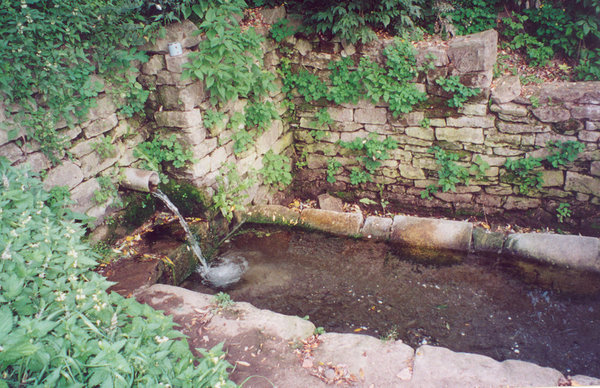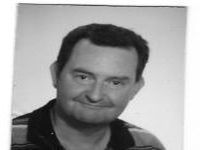Water disappearing
Water: Countdown to Day Zero

The day the taps run dry, Day Zero. Setting: South Africa, Cape Town. Drought has seen the reservoirs run almost dry, our collective future on Planet Dearth?
Day Zero. You turn on your tap (faucet), nothing comes out. You flush the toilet. Once, it does not refill the cistern. You blink three times, then ask, Now what? If you have not stocked up with drinking water, you do not have any. You cannot take a shower, you cannot wash the baby, water the plants or keep the greenhouse going. A few hours later, your bathroom stinks. Your entire life collapses into a quagmire that you were never expecting. Welcome to Planet Dearth 2018.
Spotlight on Cape Town, South Africa, the city that the entire planet is watching, a city facing the scenario we described above, temporarily (Day Zero) set back a few days, now to May 11 by a brief downpour yesterday and another expected for tonight. Then more sun and dryness and drought. Cape Town is one of several cities in South Africa facing the serious possibility of a severe water shortage and is therefore the focus of attention in a question which has been looming for decades and which now surfaces as a blatant reality: What happens when the water supply runs out?
Residents of Southern England will make cooing noises when they walk along the Surrey Hills a good hundred kilometers from the coast and when they find fossilized sea shells chiseled into the chalk, a sign that the area was once under water, many years before entire peoples literally walked across the land bridge between East Anglia and what is now the Netherlands. A clear sign also that the landmass is a symptom of a receding sea.
Read the streetmap of London, or other capital cities, and you will find that the main arteries along which we travel today used to be rivers. Who has not heard of London's Fleet Street? The old English word Fleot means "estuary" and the River Fleet used to be exactly that, around one hundred meters wide.
Paris is famous today for the Seine. But what happened to its sister river, the Bièvre? It also disappeared. In Lisbon, the area now called Sete Rios (Seven Rivers) is today a transportation hub. Where are the rivers? Where is Sunswick Creek in Queens, New York City? Where is Tibbets Brook, NYC? And Park River, Hartford, Connecticut? And the Negglinaya in Moscow? And the River Wein in Vienna, Austria?
If the European Union is anything to go by as we measure the future, the percentage of the population living in urbanized areas is now nearing 75 per cent and is expected to reach 80 per cent by 2050, placing a huge strain on water resources in areas which used to be floodplains and which are now running dry. Take a look at a satellite photograph of the Sahara Desert and take a look at Southern Italy and the Southern Iberian Peninsula below the River Tagus. I do not need to tell you what you will see.
So whether or not Cape Town faces Day Zero this year or next, we are collectively, in 2018, witnessing a scenario of things to come, namely the world of the water-wars, or Planet Dearth. "Nonsense!" I hear the Lobbyists bawling offstage left. "The sea level is rising!"
Let us not pull the wool over our eyes and let us not brush off serious things at a stroke and pretend that the dust we have swept under the carpet will not come back to haunt us. First let us look at the Earth, let us then see the seas.
If Cape Town is anything to measure our future by, we will have at first 50 liters of water per person per day (13 gallons). Just over half of the population will adhere to this, the richest will buy their way out of trouble, the poorest will go without. 50 liters provides 3 for drinking, 15 for bathing, 10 for cooking and cleaning and 20 for sanitation. Some time later, the amount will be restricted to half and people will have to choose where to cut. Fights will break out, security will be increased, water patrols will be set up. At first locally.
Journey to Armageddon
Then what happens if the situation worsens and whole regions, not cities, are affected? And then countries? Let us now move away from Cape Town and travel to Bolivia. Let us try to find Lake Poopó. You cannot find it because it has disappeared. There are cracked and decayed boats lying on parched mudflats. Now follow me across the Atlantic Ocean to North Africa, Chad. Lake Chad, once one of the largest lakes in the world, has diminished over the last fifty years from 25,000 square kilometers to 1,300 square kilometers. Thirty million people have lost their livelihoods or the food on their tables. Let us now move eastwards to the Aral Sea, formerly the fourth largest lake in the world. Today it has collapsed. Whole communities which lived from fishing and canning industries have to travel over one hundred kilometers to find the nearest shore, and no fish.
USA, California, Lake Owens dried up in 1926. The Islamic Republic of Iran. Lake Urmia. A dried-up salty mudflat replacing what was once freshwater beaches. Back to the USA, the Great Lakes. One point four average drop in water level, now in 2018.
Now let's see the sea
OK, statistics tell us that over 97 per cent of the Earth's water is contained in the sea. Actually it is 97.3%. Water vapor in the atmosphere (0.001%) accounts for far more than rivers, almost fourteen times less in terms of cubic kilometers at 0.0001%.
The sea level is rising. The Oceans are increasing in volume as the temperature rises which in turn melts the polar ice caps. The water level in the sea is rising, which does not mean that the water level on Earth is getting greater. It is not. So ladies and gentlemen our journey goes back to Armageddon, waiting for a rise in the polluted pea soup full of plastics, chemicals and other toxic waste which is about to invade our shores. The toxic sea level is rising, out freshwater levels are disappearing.
Welcome to Planet Dearth, 2018. Welcome to a Mars-like scenario very soon.
Photo: By User:USchick - Own work, CC BY-SA 3.0, https://commons.wikimedia.org/w/index.php?curid=4008451
Timothy Bancroft-Hinchey
Pravda.Ru
Twitter: @TimothyBHinchey
timothy.hinchey@gmail.com

*Timothy Bancroft-Hinchey has worked as a correspondent, journalist, deputy editor, editor, chief editor, director, project manager, executive director, partner and owner of printed and online daily, weekly, monthly and yearly publications, TV stations and media groups printed, aired and distributed in Angola, Brazil, Cape Verde, East Timor, Guinea-Bissau, Portugal, Mozambique and São Tomé and Principe Isles; the Russian Foreign Ministry publication Dialog and the Cuban Foreign Ministry Official Publications. He has spent the last two decades in humanitarian projects, connecting communities, working to document and catalog disappearing languages, cultures, traditions, working to network with the LGBT communities helping to set up shelters for abused or frightened victims and as Media Partner with UN Women, working to foster the UN Women project to fight against gender violence and to strive for an end to sexism, racism and homophobia. A Vegan, he is also a Media Partner of Humane Society International, fighting for animal rights. He is Director and Chief Editor of the Portuguese version of Pravda.Ru.
Subscribe to Pravda.Ru Telegram channel, Facebook, RSS!




